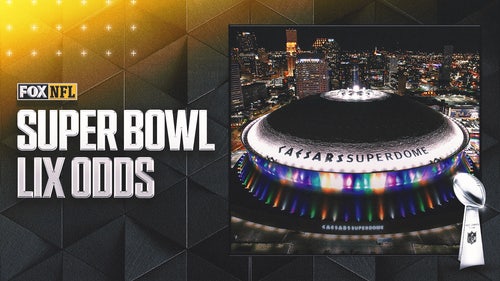Column: Tua shouldn't have played, but complex issues remain
There's one thing we can all agree on: Tua Tagovailoa had no business being on the field.
Not in the second half last Sunday.
Not in the first half Thursday night.
Beyond that, it gets a lot more complicated.
The Miami Dolphins quarterback was taken away on a stretcher with a concussion during a prime-time game against the Cincinnati Bengals on Thursday, an especially frightening incident because it came a mere four days after another hard hit against the Buffalo Bills left him wobbly.
“I'm sick,” former NFL linebacker Emmanuel Acho said in a video posted to Twitter. “When are we gonna care about player safety? Enough is freakin’ enough.”
Thing is, the league has taken steps to make the game safer, from concussion protocols to equipment changes to new rules that penalize brutal blows.
But there are no easy answers when it comes to protecting players who willingly take part in a violent sport, knowing it's impossible to totally wipe out the risk of catastrophic injuries.
The NFL could surely do more. So could the teams. And the players' union. And the players themselves, who are often their own worst enemies when it comes to their health and welfare.
That said, something clearly fell through the cracks in this case.
Everyone who viewed the hit Sunday — Tagovailoa was shoved after an off-balance throw, the back of his head slamming into the turf — saw the telltale signs of a concussion.
Tagovailoa climbed to his feet like a punch-drunk boxer. He shook his head, apparently trying to clear the cobwebs. His legs buckled, causing him to drop briefly to his knees, before he was helped to the sideline.
Stunningly, he missed only three Miami snaps at the end of the first half. Tagovailoa returned after the break to finish the game, leading Miami to a 21-19 victory over the Bills.
While the QB and his team insisted a back injury caused his rubbery legs, that explanation was rightfully met with skepticism.
So much so that the NFL and the players' union launched a joint investigation to ensure concussion protocols were followed.
The probe is expected to take up to two weeks. At the very least, Tagovailoa should have been forced to sit until it was completed.
It also seems logical in these sort of cases to require a more extensive examination by an independent medical team, to ensure a head injury was not the cause of the problem even when a player passes the initial tests.
Instead, the Dolphins — the AFC's last unbeaten team before their 27-15 loss to the Bengals — cleared Tagovailoa to play on a shorter-than-usual turnaround against the reigning conference champions.
With about six minutes left in the first half, everyone's worst fears were realized. Tagovailoa was chased down by a 340-pound lineman, spun around and tossed to the turf head-first.
While on the ground, Tagovailoa's hands froze in front of his facemask, his fingers flexed awkwardly in what appeared to be the so-called “fencing response” caused by a traumatic blow to the brain.
He didn't get up this time.
“I couldn’t believe what I saw last night. I couldn’t believe what I saw last Sunday,” Ravens coach John Harbaugh said, reflecting the exasperation and outrage coming in from around the league a day later. “I’ve never seen anything like it before. It just was really something that I couldn’t believe what I was seeing."
JC Tretter, president of the NFL Players Association, said it's imperative to determine how a player with what he called “a no-go symptom” was cleared to re-enter a game in the first place on Sunday, not to mention why he was allowed to play again four days later.
Tretter also acknowledged that the protocols are hampered by the inexact science of determining brain injuries. Mistakes can be made, even when every step is followed to the letter of the guidelines.
“Until we have an objective and validated method of diagnosing brain injury, we have to do everything possible, including amending the protocols, to further reduce the potential of human error,” he said. “A failure in medical judgment is a failure of the protocols when it comes to the well-being of our players.”
After his latest injury, Tagovailoa was loaded onto a backboard, stabilized and strapped to a stretcher. There was no question that he sustained a concussion. He will have to be symptom-free before he is allowed to play again.
“My heart rate is literally heightened because I watched Tua display concussion-like symptoms last week, and they let him back into the game,” Acho said. “They called it a back injury. Maybe it was, but he displayed concussion-like symptoms. It’s better to be safe than sorry.”
Maybe this will be another wake-up call to a sport that has left a litany of broken, damaged humans in its wake.
Certainly, Tagovailoa's case drew more attention because of the position he plays, the most prominent, highest-paying spot on the field. Most fans have already moved on from Bills cornerback Dane Jackson sustaining a scary injury in a Sept. 19 game against Tennessee, one that forced him to be rushed to the hospital with his head immobilized.
Jackson says he's OK and ready to get back in the game.
Let's hope Tagovailoa recovers, too, though he should give serious thought to whether this game he loves so much is truly worth it.
A few have mustered the courage to walk away rather than risk injuries that might affect them for the rest of their lives.
If Tagovailoa, only 24, is faced with such a decision, let's hope he makes the right call.
It's about time someone does.
___
AP Sports Writer Tim Reynolds in Miami contributed to this report.
___
Paul Newberry is a national sports columnist for The Associated Press. Write to him at pnewberry(at)ap.org or at https://twitter.com/pnewberry1963
___
More AP NFL: https://apnews.com/hub/nfl and https://twitter.com/AP_NFL








